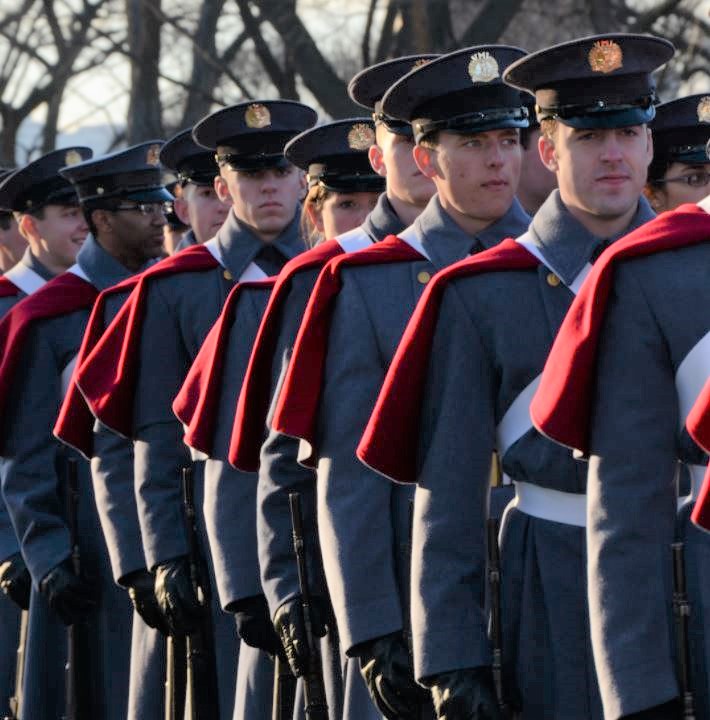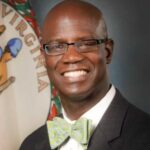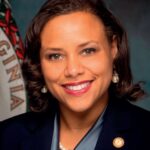On Oct. 18, Governor Ralph Northam and senior Democratic members of the General Assembly wrote a letter to the Virginia Military Institute Board of Visitors expressing deep concerns about “appalling” allegations of racism at the military academy. The letter proceeded to repeat charges previously aired in the Roanoke Times and Washington Post and announced plans to hire an “independent” and “non-partisan” investigator to conduct a review and report preliminary results by year-end.
By Nov. 1, the administration had mobilized to issue a Request for Proposal. That responsibility was nominally given to the state agency in charge of overseeing Virginia’s higher education system, the State Council of Higher Education for Virginia (SCHEV). But senior officials of the Northam administration were intimately involved in drafting and editing the politically sensitive document, which detailed exactly what the winning vendor was supposed to investigate and how to do it.
On Nov. 17, the administration announced an intent to award the contract to the Washington, D.C., office of a national law firm, Barnes & Thornburg. A competing vendor, CAI, filed a protest, which delayed granting of the final award, and then filed a lawsuit. Documents revealed in the lawsuit exhibits and Freedom of Information Act requests call into into question how “independent” and “non-partisan” the inquiry is. Indeed, a close look at the administration’s objectives and actions suggests that the investigation findings — an “interim” report is due to be released this week — are to some degree fore-ordained.
In a previous blog post, “The VMI Contract: Why the Rush?” I showed how the Governor’s Office ramrodded the RFP through in 10 days compared to the normal 30 days so the investigation could produce “preliminary” findings in time to propose legislation for the 2021 General Assembly. The administration could not meet that deadline, and the preliminary report ultimately was not issued until mid-February.
But, as I shall show in this post, the Governor’s Office, not SCHEV, dictated the terms of the RFP and selected the investigator, Barnes & Thornburg. In so doing, Northam ensured that the investigation would be anything but “independent” and “non-partisan.”
Controlled by the Governor’s Office. By Oct. 30, top officials in the Northam administration had it clear in their minds what they wanted to accomplish. Northam wrote a letter to various state officials (the recipients and contents of which have been entirely redacted in response to an FOIA) filing, but someone leaked the document or summarized its contents to Washington Post reporter Ian Shapira.
Wrote Shapira at the time: “[Northam] said he hopes the team will use interviews, focus groups and anonymous surveys and that it will review documents and other relevant school policies. He also said the team will identify any civil rights violations or immediate or past threats of racial violence.
Northam set December as the deadline for a preliminary report and June 2021 as the date for final findings and recommendations.”
In a normal procurement, SCHEV would have taken on the job of writing the RFP without much high-level involvement. What made this procurement unusual is that the Governor’s Office was engaged in every step of the process and exercised a heavy hand in reviewing and editing the document. From the very beginning, SCHEV was responding to orders from on high.
The job of pushing through the RFP in the shortest possible time that could be done legally was given to Frances Bradford, deputy secretary of education. Bradford was in continual contact with officials in the Governor’s Office and/or cabinet. With minimal experience in writing RFPs, she had to learn on the job.
Peter Blake, SCHEV’s executive director, did not want the task. As he wrote in an email to two subordinates, on Oct. 30, “The Secretary of Education [Atif Qarni] would like for us to do the procurement for an investigation of VMI. You have read the news accounts. I told Fran that we do not want to do it. She might want to have call with us in the morning.”
In an email to subordinates, Blake revealed that Bradford and unnamed “others” had already written “the guts of the proposal.” But Bradford needed help in fashioning the proposal to fit the RFP format. Blake sent her a copy of a previous RFP that SCHEV had written “to give her an idea of what she needs to include.”
In an aside, Blake noted that the Secretary of Administration was in the loop. Northam’s Secretary of Administration, Keyanna Conner, oversaw the Department of General Services (DGS), which handled most procurement for state government and whose career employees were the experts in procurement law. Blake wrote that Bradford had told him that “that the Secretary of Administration said that there is a process that can be completed in 10 days.”
As she was getting her bearings, Bradford confirmed the involvement of Qarni and Conner in an email to two DGS employees. “I am not exactly sure why I am writing except to say that Sec. Qarni — after either talking with Sec. Conner or someone at DGS — gave me your names as possible resources as we try to get an RFP on the street as quickly / but legally as we can for this ‘investigation.'”
(It is not clear from the context of her email why Bradford put “investigation” in scare quotes, but one possible interpretation is that she knew the inquiry would yield predictable results.)
Bradford wrote another email Oct. 30, to Jennifer Brooks, the SCHEV procurement officer who was about to depart on family vacation, in whose lap the RFP project had dropped. “Attached is a confidential draft of the guts of a potential RFP. Recognizing I do not have the foggiest idea of what the guts should look like. Is it something DGS can help us use to craft an actual RFP?”
On Nov. 2, Bradford wrote an email confirming the participation of the Governor’s Counsel, Rita Davis. She wrote: “The Counsel’s office has some legal language that she feels needs to be added. I have no idea what that is.”
The next day, Bradford wrote Brooks again. “I just spoke with folks on my end and they are hopeful of getting your version by 3p.m.” The timeline was tight, she added, because “we need to reflect the RFP in the gov’s budget amendments which are finalized tonight.”
Working into the evening, Bradford wrote Brooks again around 7:30 p.m. “We’ve made some edits to the guts portion. The Chief of Staff [Clark Mercer] is reviewing those this evening. Hopefully … we can put the Frankenstein’s monster together.”
The Governor’s Office was still working on the RFP the following day, as confirmed by an update from Blake to Brookes. “We had a good call with the Governor’s Office and DGS this morning. They are working on the details of the proposal.”
What the Northam Team Wanted. On Nov. 5, 2020, SCHEV officially published the RFP, “Marching Toward Inclusive Excellence: An Equity Audit and Investigation of Virginia Military institute.” Vendors had 12 days to respond.
The document laid out the purpose of the RFP: “Given the recent and historical complaints of racial intolerance at the Virginia Military Institute (VMI), the State Council of Higher Education seeks proposals for an independent interdisciplinary team to investigate the culture, policies, practices, and
traditions at VMI.”
The Overview said the Special Investigation Team should use interviews, focus groups, anonymized surveys and other investigative methods to gather input from the VMI community, “paying particular attention to those vulnerable members who may be reluctant to participate for fear of retaliation.” The Team would review VMI documents and policies, compare findings with data on Virginia’s other colleges and universities, and “propose recommendations and benchmarks” for measuring VMI and its leadership going forward.
Investigators should determine if there is a “culture of racial intolerance” at VMI, and if current or former cadets had “experiences related to civil rights violations and/or explicit threats of racial violence.” Investigators also should probe for “equity gaps” in VMI’s culture and policies. “Are VMI’s current efforts at Diversity, Equity & Inclusion (DE&I) effective? What perceptions do members of “underrepresented groups” have? Is there a “disparate approach” to discipline and punishment?
The questions were loaded toward “perceptions” and subjective evaluations. Nowhere in the RFP was there a directive to evaluate the fairness and accuracy of the specific racial incidents described by the Washington Post that led to the investigation in the first place.
One question was especially loaded: “Is the composition of cadet corps, faculty, staff, and administration personnel reflective of the racial and gender demographics of Virginia?” Not one public Virginia college or university had a student body, faculty, staff and administration that matches Virginia’s racial/ethnic demographics. But VMI would be held to that standard.
The RFP listed three deliverables: a “preliminary” report by Dec. 31 — in time to inform legislation to be submitted to the General Assembly — an “interim” report by Feb. 5, and a “final” report by June 1.
The selection process. Twelve bidders responded to the RFP. Under considerable time pressure, the Northam administration had to pick one. A panel of six evaluators was appointed. It’s not clear from the public record who appointed the evaluators, but on Nov. 9, it was clear that the list was nearly complete.
In an email Bradford indicated that Brooks, SCHEV’s procurement officer and nominal author of the RFP, would be one of the evaluators. Wrote Bradford:
Will confirm the panel’s and get back to you.
I believe, but am not certain, that in addition to you it would [be] –
Rita Davis – Counsel to the Governor
Dr. Janice Underwood, Chief Diversity Officer
Carlos Hopkins, Secretary of Veterans Affairs
Peter Blake, SCHEV Director
Fran Bradford, Deputy Secretary of Education
But the list might have changed. In preparing his formal protest of the award, Robert Morris, the principal of losing bidder CAI, tried to ascertain the identity of the evaluators. In an unusual practice, evaluators were designated in the documents by alphabetical designations — such as Evaluator A, Evaluator B, etc. — which concealed their identities. However, Morris was able determine the identity of five of the six because they all signed Public Procurement Ethics, Non-Disclosure, and Conflict of Interest forms. The sixth evaluator did not.
Those who signed were:
Clark Mercer
Peter Blake
Frances Bradford
Carlos Hopkins
Janice Underwood
Mercer was a new addition, not mentioned in Bradford’s memo. Whom did he replace — Jennifer Brooks, the SCHEV procurement officer, or Rita Davis, legal counsel to the governor? Moreover, why was the identity of the sixth evaluator identity concealed, and why did he or she not sign the Public Procurement Ethics form?
In a Nov. 4 memo that Morris obtained through the Freedom of Information Act, Brooks distributed a section of the Virginia Public Procurement Act outlining ethics in public contracting. In that email, Brooks referred to herself as chairman of the evaluator committee. And, as noted above, Bradford suggested in the Nov. 9 email that Brooks would be one of the evaluators.
But it is possible that Brooks was replaced. Given the critical role of the unknown Evaluator F in tipping the selection to Barnes & Thornburg, there is reason to think that the unknown evaluator was Davis, Northam’s legal counsel, architect of his legal strategy to remove the Lee statue from Richmond’s Monument Avenue, and likely a fierce advocate of Northam’s Diversity, Equity & Inclusion (DE&I) initiatives. From the evidence that has been made publicly available, we just don’t know.
There were two rounds to the selection process. In the first, evaluators scored the firms. The top four advanced to the second round for interviews. As it turned out, all bidders selected for the second round were law firms that had professed their dedication to social justice and DE&I.
- Washington, D.C.-based WilmerHale lists diversity and inclusion as one of its “guiding principles.” States the firm website: “Our commitment to diversity and inclusion arises from our legacy of leadership on civil and human rights issues and our belief that diversity and inclusion is a key driver of the value the firm provides to clients.”
- Holland & Knight, headquartered in Miami, Fla., touts its commitment to diversity and inclusion. “Holland & Knight’s commitment to diversity and inclusion starts from the top,” affirms its website. The company has a Diversity Council, local diversity committees, and affinity groups that sustain an “inclusive and supportive” environment for blacks, Hispanics, Asian/Pacific Islanders, Native Americans, LGBTs, women and veterans.
- Alston & Bird, an Atlanta-based firm, highlights its commitment to Diversity & Inclusion on its website. Company-wide goals include recruiting more women, people of color and members of the LGBT community, mentoring minorities and helping them become partners, celebrating cultural differences, and “adding a voice to the call for diversity within the profession.”
- Barnes & Thornburg was even more militant in its expression of support for social justice and DE&I. Its website says:
Our country has been hurting and reacting since the death of George Floyd at the hands of police, which was followed by acts of protest and anger in Minneapolis and across the country. We continue to reflect on the death of Mr. Floyd and our need to remember all those who face injustice: to understand how it occurs and what can be done to prevent it. …
We at Barnes & Thornburg wholly denounce racism in any form and seek to play a part, in whatever way we can, to address the burdens the events in Minneapolis have brought and the larger social forces that led to them.
Over and above promoting DE&I within the firm, Barnes & Thornburg partners had endowed a nonprofit foundation with $75,000 to “combat racism and social injustice” and committed to providing “more effective pro bono legal services that target systemic racism.”
Barnes & Thornburg also had worked its political contacts in Virginia. On Oct. 3, partner Roscoe C. Howard, Jr., had sent a letter to Northam, Lieutenant Governor Justin Fairfax, Attorney General Mark Herring, and Del. Lamont Bagby, D-Richmond, chairman of the Legislative Black Caucus, expressing the firm’s interest in handling the investigation. In the letter Howard highlighted the firm’s “unique, national commitment to racial and social justice” as evidenced by its launch of the Barnes & Thornburg Racial and Social Justice Foundation.
Meanwhile, CAI had submitted a proposal that was, by any impartial evaluation, credible. Morris, a VMI alumnus and a decorated veteran, had assembled a “Senior Subject Matter Expert and Oversight Group” that included Pat Locke, the first African-American woman to graduate from West Point; Jamie L. Mines, the first African-American woman to graduate from the Naval Academy; and Retired Lieutenant General Russel Honore, the African African-American general who earned fame for his his leadership role in the Hurricane Katrina aftermath. Of all the bidders, his group had the strongest experience with military academies. But his proposal contained elements that suggested his investigative team might be less likely to deliver a VMI-is-racist verdict. His strategy called for establishing a relationship of trust with the VMI administration, rather than an adversarial relationship, in order to pursue the investigation. His proposal emphasized the need to conduct surveys that were statistically valid. Also, as a white VMI alumnus, he might have been suspected of being sympathetic to the VMI administration.
CAI didn’t make it past the first round.
The scoring process. Parties protesting the awarding of a contract are allowed to access documents pertaining to the award process. Morris was given only two hours to inspect more than 1,000 pages of documents and not allowed to make photos or copies of any, so the evidence he was able to gather was fragmentary. But those fragments do provide clues into the thinking that went into the selection of Barnes & Thornburg.
Of particular interest are notes from a communication from Jennifer Brooks to Janice Underwood, Northam’s chief diversity officer. Underwood was the driving force behind Northam’s ONE Virginia plan to advanced DE&I across statement government, including a “Strategic Plan for Inclusive Excellence” in higher education. That plan was built on the premise that Virginia institutions are systemically racist: “American institutions of racial domination have evolved from slavery and segregation to punitive, exploitative, and unjust systems of housing, education, labor markets, criminal justice and more.”
At one point in the selection process Underwood proposed changing the scoring criteria, although it is not known how. In an email Brooks responded to a previous Underwood missive:
Thank you for this. You are on the right track, and yes this part of the process is extremely subjective. That will become very apparent at the consensus meeting when scores seem to be all over the board. However, Chief Mercer has already submitted his scoring matrix and I don’t think we should ask him to revisit it at this time.
Would it be okay if when we meet for the consensus meeting, we propose to score based on the added criteria/breakdowns that you propose? That way we can make sure to think about and include each item you included. And of course, you are able to score your individual round however you wish to.
In a Dec. 3 communication, Underwood outlined her thinking about the four law firms that made the first cut. She was particularly concerned that each “offerer”(or bidder) “bracket their own bias and incomplete knowledge of racial/cultural oppression.”
In Underwood’s estimation, Wilmer Hale and Holland & Knight had significant drawbacks. She liked Alston Bird, expressing only the reservation that no one on the law firm’s proposed team had a military background. But she was most focused on Barnes & Thornburg, where her concerns for DE&I credentials were paramount.
BT — The methodology appears weak in the proposal, but the experience of the team seems good in many places. There is an over-exemplification of legal expertise demonstrated with many lawyers with legal acumen (DEI partner) in various sectors but there are no DEI content experts or sub contractors? How will you accommodate for this? The proposal overemphasizes that it has a successful and proven track record of making complaints go away (UVA case, NYC retail complaint). How will the offeror maintain an objective lens toward authentically investigating DEI issues as opposed to making this (an issue that is already nebulous and hard to “prove”) “go away”? BT touts having expertise from a military academy (former chief of operations at West Point), but this military academy remains fraught with racial concerns. What do you intend for this people to offer?”
In other words, high on Underwood’s list of concerns was that an investigator might make VMI’s racism problem “go away,” presumably by reporting findings that were inconclusive or that contradicted her belief in systemic racism. She declared that she wanted “objectivity” — but objectivity that aligned with her framework for understanding issues of racial equity.
Evaluators had four criteria by which to judge the offerers: 40 points for experience & qualifications, 30 points each for methodology & plans, 20 points for Small Woman and Minority-owned (SWAM) qualifications, and 10 points for price. The latter two categories were straightforward. But the first two offered considerable latitude for subjectivity
SCHEV Director Blake seemingly took his opinions out of consideration by assigning no more than five points for methodology & plans and five for experience & qualifications — 10 points out of 70 — to any offerer. Similarly, Bradford, the deputy education secretary, awarded far fewer points than the other four evaluators. Underwood, Hopkins, Mercer, and Evaluator F dominated the scoring.
The most curious aspect of the scoring was that Evaluator F gave 35 points to Barnes & Thornburg for methodology & plans, even though the maximum allowed was 30 points. This is only one of the many irregularities that Morris details in his lawsuit that stacked the deck in favor of Barnes & Thornburg.
But some of the scoring contradicts the idea that the fix was in for Barnes & Thornburg. Quite simply, the evaluators did not agree on whom to select. Counting the 70 points from the two most important and most subjective categories, Underwood favored Bird & Alston by three points and Mercer by three. Hopkins favored Barnes & Thornburg by five points and Evaluator F by 15. It might help clear things up if we knew the identity of Evaluator F and how he or she was allowed to add the decisive additional five points to his/her score that clinched the bid for Barnes & Thornburg.
So, what does it all mean? What seems indisputable from evidence presented here is that the the Governor’s Office wrote the “guts” of the RFP, defined the goals and methods of the investigation to examine perceptions rather than actually investigate specific allegations of racism, narrowed the selection to four law firms all touting their devotion to the Diversity, Equity & Inclusion mantra, and in the final analysis picked the firm that had most conspicuously proclaimed its commitment to DE&I and the fight against racism.
Barnes & Thornburg is scheduled to deliver its “interim” report — the first report with any substantive findings — later this week. Will that report be truly “independent” and dispassionate, or will it confirm Governor Northam’s conviction from the beginning that VMI is a cesspool of “appalling racism?”
We won’t know until we see the report.









